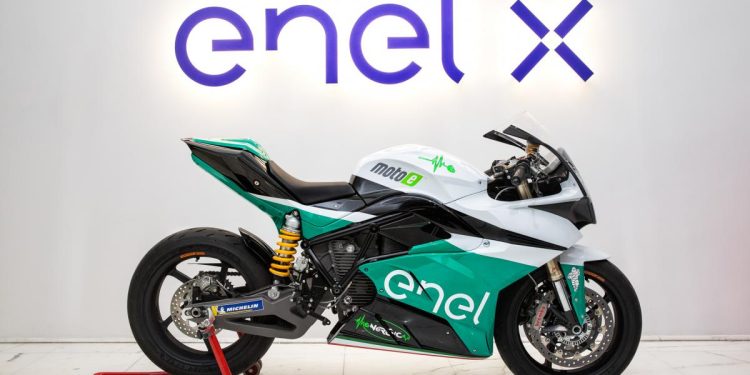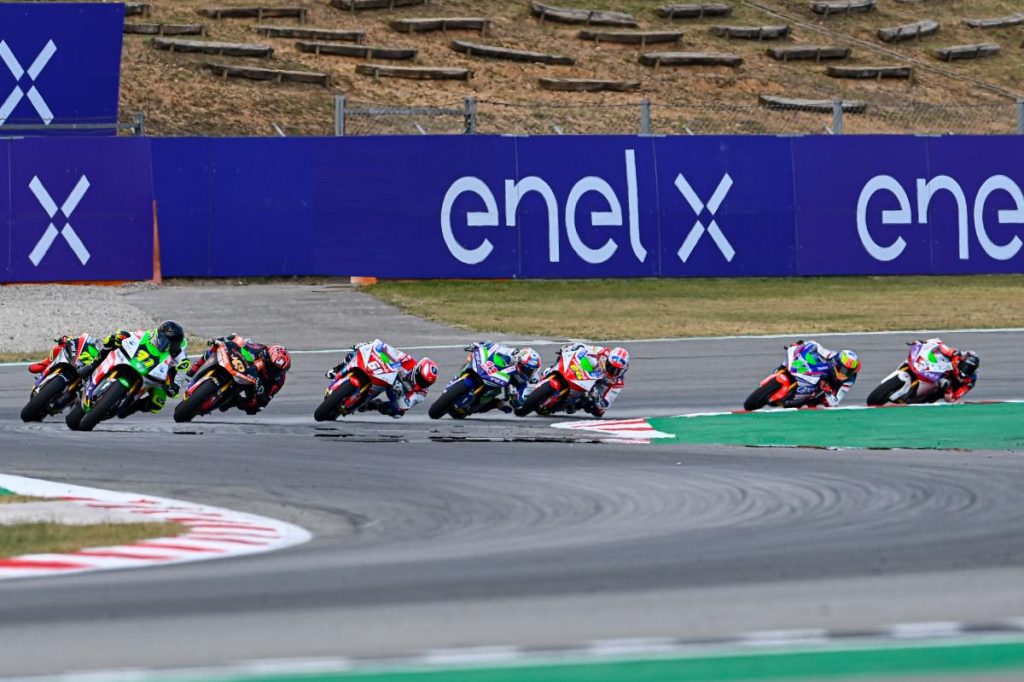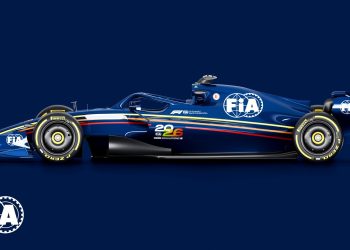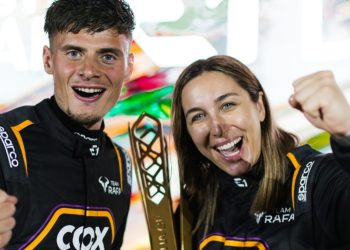The 2021 MotoE season, which ended with a thrilling victory by Spaniard Jordi Torres, continues to leave interesting curiosities to analyze ahead of the 2022 season, the last to be contested with Energica vehicles after announcing the closure of the cycle in the competition.
Between 2019 and 2021 some technical solutions were introduced with the aim of extending the duration of the races. The two components that have made it possible to achieve this goal were the battery cooling system, developed by Energica, and the chargers on the starting grid, by Enel X.
According to data provided by the tournament, cited by Epaddock, the average competition distance in the first edition of MotoE in 2019 was 25.8 kilometers, a figure that increased to 28.0 km the following year and experienced another jump in 2021 with 29.9.
In these first three years of MotoE, not only the Ego Corsa evolved, but also the riders’ lineup. While in the first season, team managers were still unclear about the characteristics a rider had to have to go fast, in later seasons the squads focused more and more on young talents eager to show off in the world championship paddock.
Related content: What are Ducati’s Plans to Triumphantly Arrive to MotoE?
This meant that everyone’s performance improved as the lap time gap narrowed. The parameter most often considered is the average race distance between the winner and the tenth-placed finisher; this fell from just over 12 seconds in 2019 to 9 seconds in 2020, and 8.5 in 2021, Epaddock highlights in the most important statistics of the harvest.
Kilometers
From 2019 to 2021, the average race distance increased, but there was also an increase in the number of days held during the season. As a result, the total kilometers ridden by the 18 MotoE World Cup riders rose considerably.
The kilometers ridden in the four rounds of the 2019 World Cup were 10,010 km, the following year there were five contests of 12,273 km up to 16,567 km for the six events in 2021.
Among the important MotoE statistics is the best comebacks in the race as well. As a sign of the increased competitiveness of the electric category, there have been the three best overtakes of the season just ended.
Among the meticulous numbers that reflect El Paddock and MotoE, at the French GP in Le Mans, Mattia Casadei recovered 13 positions, Matteo Ferrari recovered 12 at the Spanish GP in Jerez, while Eric Granado, at the Austrian Red Bull Ring circuit, recovered 11.
Written by I Jhonattan González




















